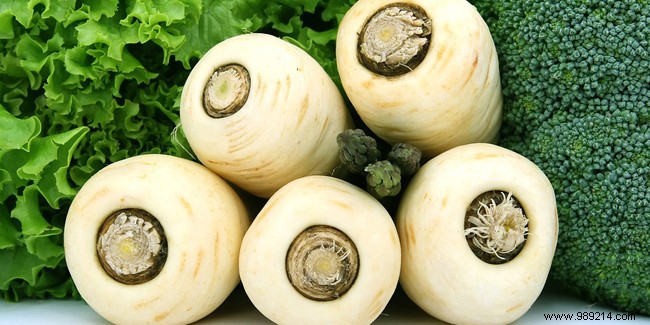
Many vegetables, which some of you have known, have disappeared from our markets or our supermarkets because they were not profitable in terms of cultivation or because their taste no longer corresponded to that of today's consumers. today.
However, these forgotten vegetables, which for some are coming back to the fore, can very easily be planted in the garden and grown without chemicals. So why not rehabilitate forgotten vegetables in your vegetable garden? They will bring back memories, amaze your guests and help you develop biodiversity. Some ideas of forgotten vegetables to plant in the garden.
In appearance, the parsnip resembles a white carrot. It is its root that is eaten. It is sown in the garden from February to June at a depth of at least 1 cm in well-prepared light soil. Parsnips should be sown in small trenches spaced at least 30 cm apart. The emergence time of the parsnip varies between 12 and 15 days and its harvest is done between 4 and 5 months after its sowing. This vegetable does not require any particular maintenance in the vegetable garden, apart from weeding and watering in case of hot weather. You will enjoy cooking the parsnip mashed, in a gratin or even eating it raw.
The Jerusalem artichoke is one of the forgotten vegetables which is currently regaining its letters of nobility. Its planting and cultivation are very simple. Jerusalem artichokes grow in all types of soil. Its tubers are planted 10 cm deep, from February-March until mid-spring, in line with a spacing of 80 cm to 1 meter because the Jerusalem artichoke is quite invasive. In addition, the Jerusalem artichoke gives abundant harvests from its flowering and throughout the winter.
Rutabaga, also called yellow turnip, is a forgotten vegetable that is very easy to grow and adapts perfectly well to cold and humid climates. If you want to sow it directly in the ground, you can do it from May to July. From March to April, you will need to sow it under cover. The rutabaga particularly appreciates moist soils. It is enough to bury the rutabaga seeds 1 or 2 cm deep in rows spaced 30 to 40 cm apart. It is harvested 3 to 4 months after sowing, from October to March.
Salsify, with a fine taste, has good nutritional qualities (protein, calcium, iron, vitamin E, phosphorus) and requires very little maintenance in the garden, apart from regular watering in case of hot weather. The cultivation of salsify is done either by sowing or by planting young plants. Salsify likes rich, well-drained soils. It is harvested from October to April.